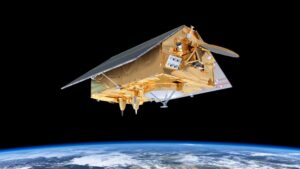“Climate change is an all-hands-on deck, global challenge that requires action now,” NASA Administrator Bill Nelson said in a statement about the agreement. “This agreement will set the standard for future international collaboration, providing the information that is so essential for tackling the challenges posed by climate change and helping to answer and address the most pressing questions in Earth science for the benefit of the United States, Europe, and the world.”
NASA and ESA already cooperate on Earth science research. An example is Sentinel-6, a program to fly two satellites to continue a three-decade record of sea level measurements. That program includes NASA and ESA, along with the National Oceanic and Atmospheric Administration in the United States and the European Commission, Eumetsat and the French space agency CNES in Europe. NASA launched the first European-built Sentinel-6 satellite in November 2020.
The agreement is intended to create a more overarching strategic partnership, including cooperation on missions and other research activities. One example is joint work by the agencies to define a mission to study the water cycle that would be a successor to the current Gravity Recovery and Climate Experiment (GRACE) Follow-On spacecraft.
Both agencies have made Earth science in general, and climate change in particular, a priority. NASA announced May 24 it would pursue a series of missions called Earth System Observatory, implementing recommendations of the 2018 decadal survey. NASA requested a $250 million increase for Earth science in its fiscal year 2022 budget proposal in May, and a House bill advanced by an appropriations subcommittee July 12 included that increase.
ESA and the European Union are working together on the Copernicus Earth observation program, which features a series of Sentinel satellites like Sentinel-6. Josef Aschbacher, director general of ESA, said at a press conference after a meeting of the ESA Council June 16 that ESA and NASA were looking to strengthen their cooperation on Earth science.
“We’ve been cooperating for more than a decade extremely well,” he said, citing Sentinel-6 as an example, but that the new agreement would “reinforce the cooperation in Earth science.”



